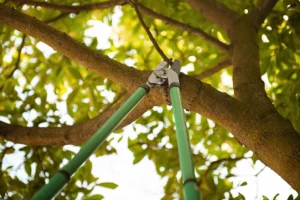In the quest for operational optimization and eco-friendly practices, businesses are turning to a crucial strategy: tree thinning. This method, often underestimated, offers a range of benefits beyond forestry. By implementing a well-planned tree-thinning approach, companies can enhance tree health, increase productivity, and improve resource allocation while promoting ecosystem well-being. But what are the core principles that drive effective tree thinning, and how can businesses leverage its potential for growth and wellness? Let’s explore the Comprehensive Guide to Tree Thinning at the place.
Key Takeaways
- Tree thinning is a deliberate process in forest management that enhances forest ecosystems and promotes biodiversity.
- Prioritizing tree health boosts business performance through increased productivity, reduced costs, and optimized resource allocation.
- Effective thinning strategies involve regular operations, selective removal of competing trees, and optimizing forest density for improved air circulation and sunlight penetration.
- Tree thinning enhances forest productivity by improving resource availability, leading to increased growth rates and boosted forest health and vitality.
- Sustainable forestry practices, including tree thinning, promote overall wellness, biodiversity conservation, and balanced forest ecosystems, leading to improved environmental wellness.
Understanding Tree Thinning Fundamentals
In forest management, tree thinning is a deliberate process of selectively removing trees to improve the growth, health, and productivity of the remaining trees, making it a crucial strategy in forestry and woodland maintenance. This In-Depth Guide to Tree Thinning outlines the importance of tree thinning in enhancing forest ecosystems, promoting biodiversity, and promoting a healthy environment.
Tree Health and Business Performance
As forest managers prioritize tree health, they can reap tangible benefits for their business, including boosted productivity, improved resource allocation, and increased profitability. By optimizing tree health, businesses can reduce costs associated with disease management and pest control, allocating resources more efficiently and promoting a thriving forest ecosystem.
Effective Thinning Strategies Explained
Regular thinning operations are essential to maintaining a healthy forest ecosystem, as they empower foresters to selectively remove trees that are competing for resources, thereby promoting the growth and development of desirable species. This strategic approach optimizes forest density, improves air circulation, and boosts sunlight penetration, ultimately leading to a thriving forest ecosystem.
Frequently Asked Questions
What Is the Ideal Tree Density for Optimizing Forest Growth and Wellness?
The ideal tree density for optimizing forest growth and wellness varies depending on species, climate, and management goals, but a general guideline is to maintain 30-50 trees per acre, allowing for adequate sunlight and resource distribution.

Can Tree Thinning Be Done Without Harming the Environment?
Tree thinning can be carried out without harming the environment by adopting sustainable practices, such as selective removal of trees, minimizing soil disturbance, and preserving biodiversity, ensuring a balanced ecosystem.
How Often Should Tree Thinning Be Performed for Optimal Results?
To achieve the best results, tree thinning should be performed every 10-15 years, depending on species, age, and environmental factors, ensuring a balanced canopy and promoting healthy growth, while minimizing environmental impact.
What Is the Impact of Tree Thinning on Local Wildlife Habitats?
Tree thinning can have a profound impact on local wildlife habitats, potentially altering species composition, habitat structure, and resource availability, necessitating careful consideration of ecological consequences in thinning strategies to guarantee biodiversity conservation.
Can Tree Thinning Be Used to Mitigate the Risk of Forest Fires?
Yes, tree thinning can effectively reduce the risk of forest fires by decreasing fuel loads, establishing firebreaks, and promoting a healthier, more resilient forest ecosystem, ultimately lowering the likelihood of catastrophic wildfires.
Conclusion
Optimized tree-thinning strategies can significantly improve business performance by promoting tree health, boosting productivity, and optimizing resource allocation. By integrating sustainable forestry practices, businesses can achieve a balanced forest ecosystem that supports economic growth and environmental sustainability. Effective tree thinning is essential for maintaining ecosystem health, conserving biodiversity, and ensuring long-term wellness benefits. By adopting strategic tree-thinning approaches, businesses can nurture a thriving forest ecosystem that drives business growth while promoting environmental stewardship.
You May Also Like:
